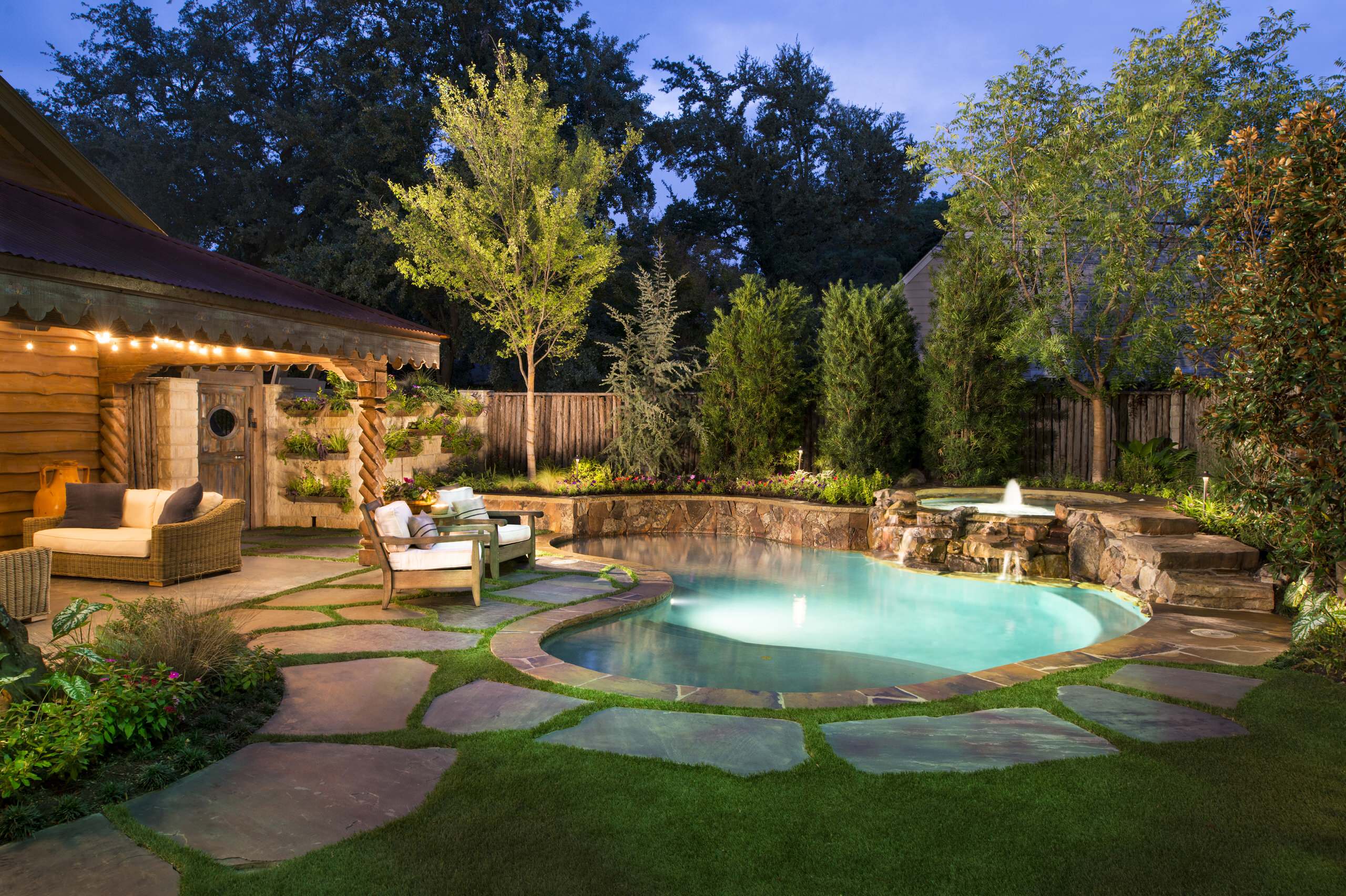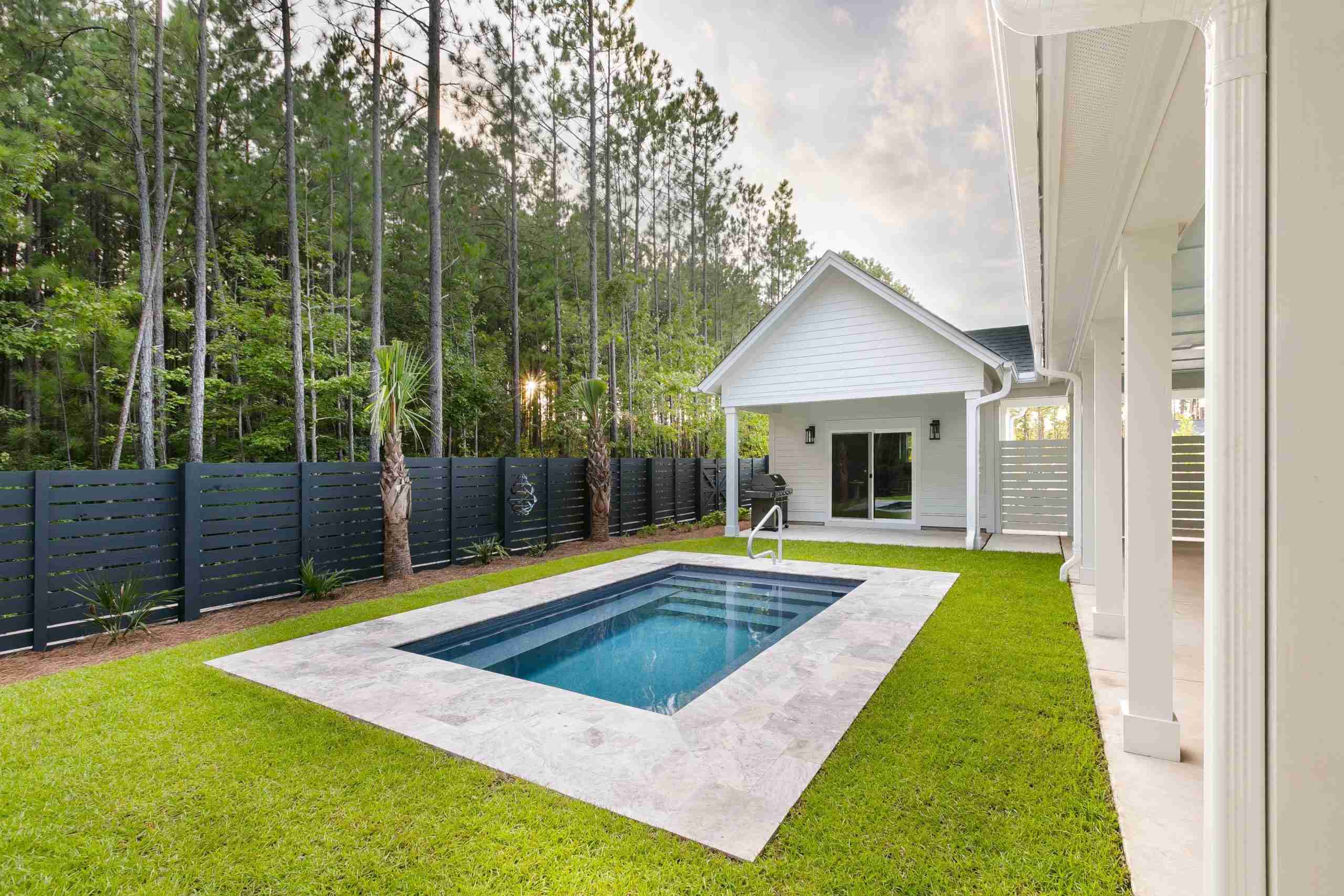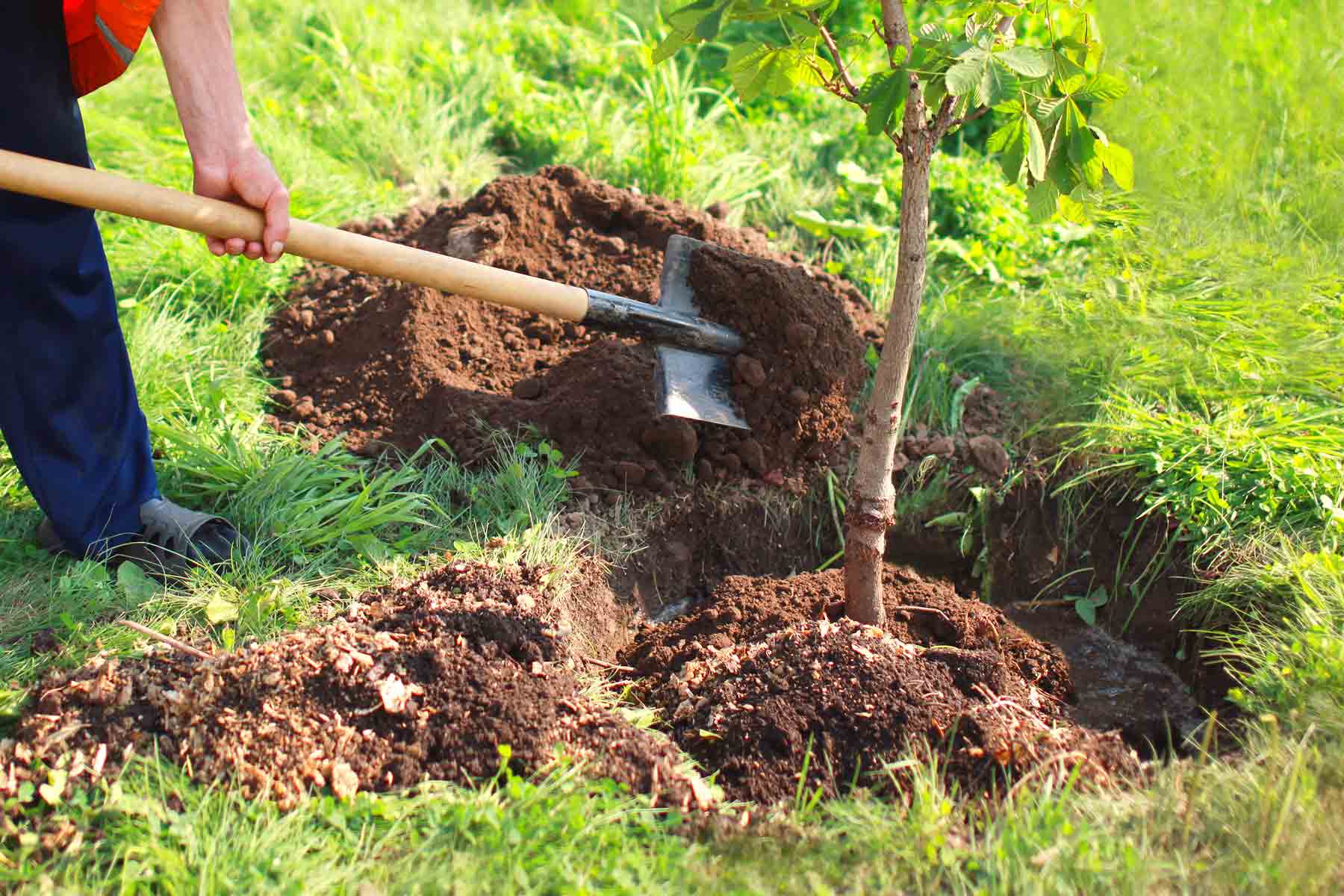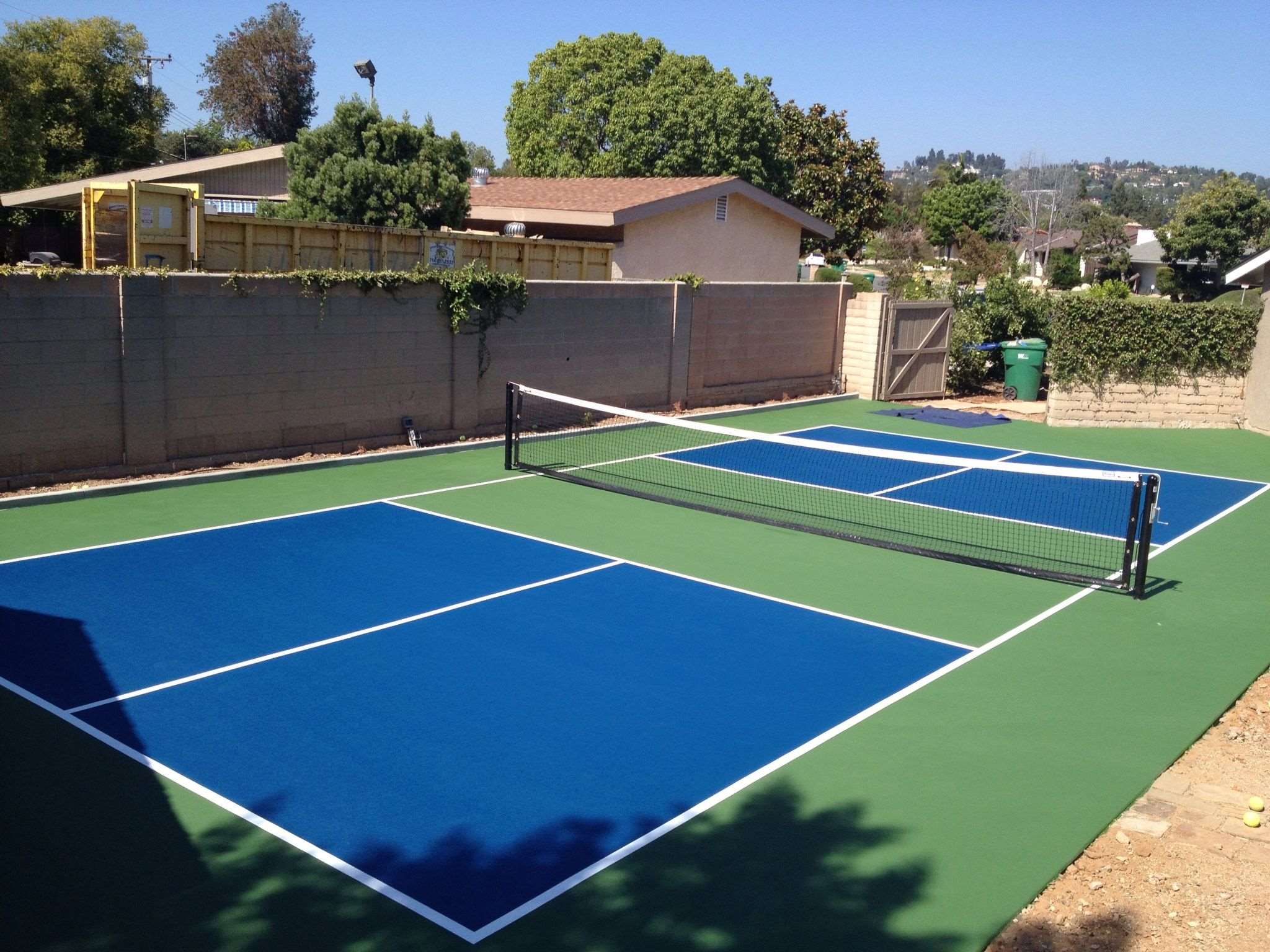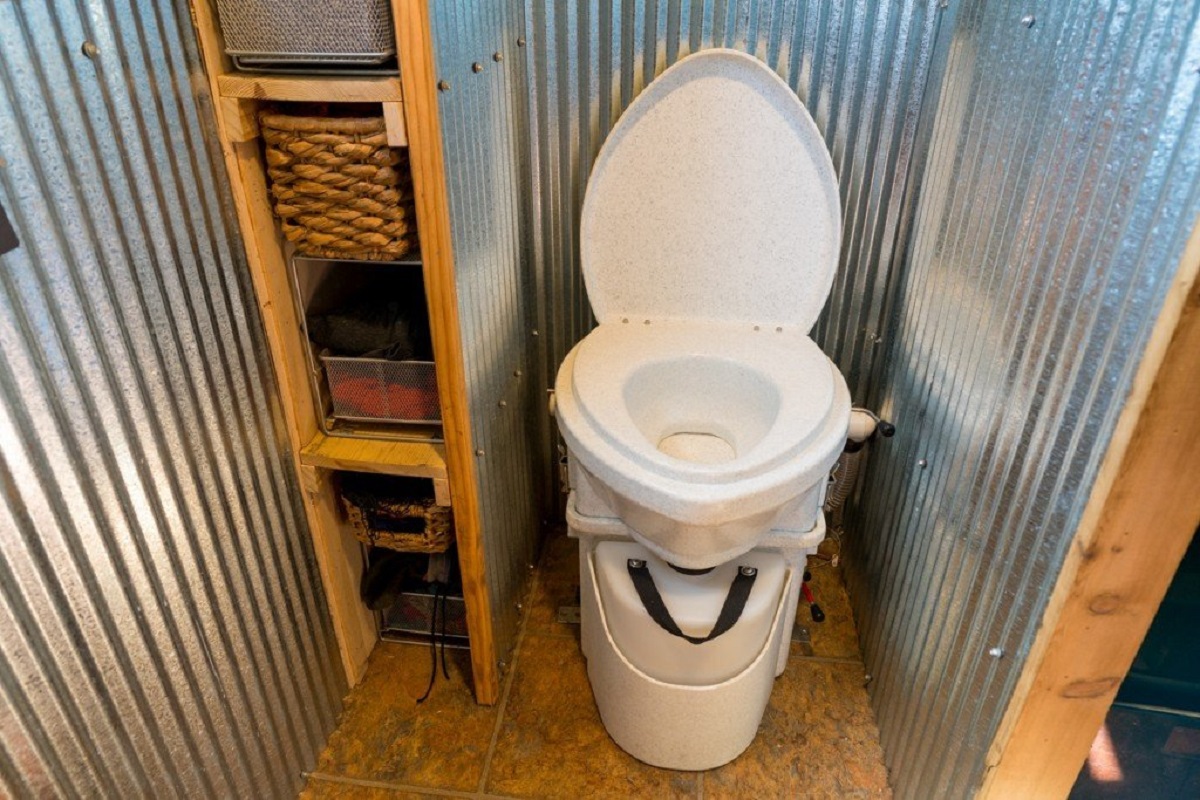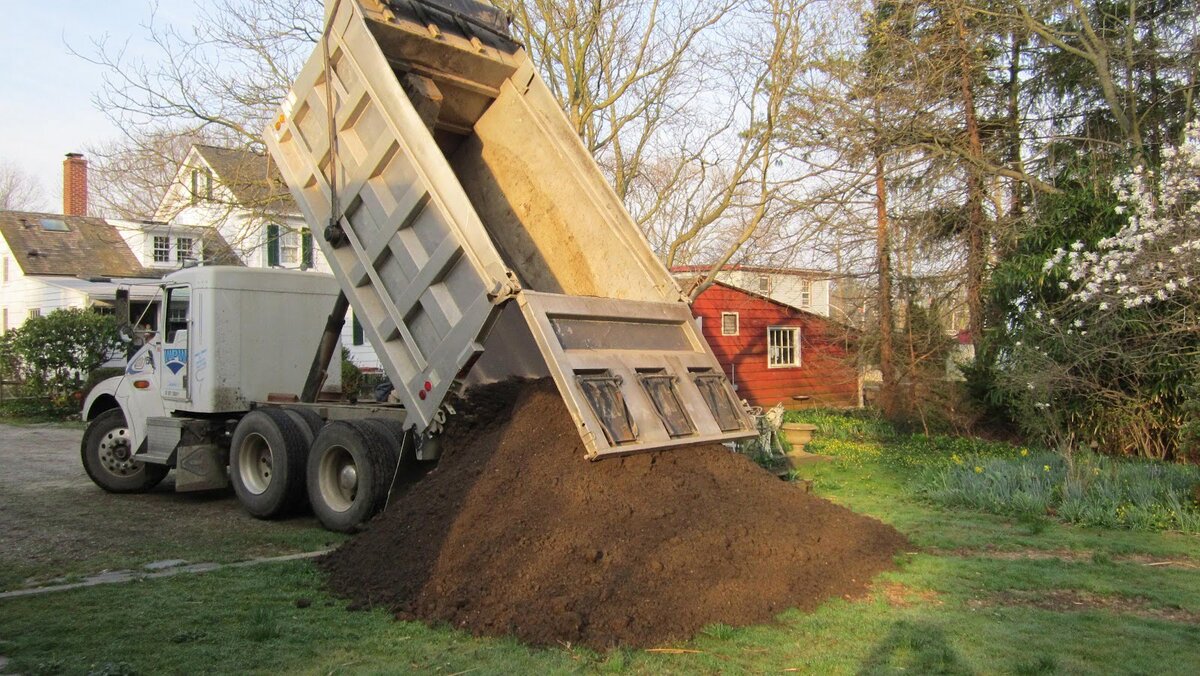Home>Garden Design>How Much Does A Backyard Deck Cost
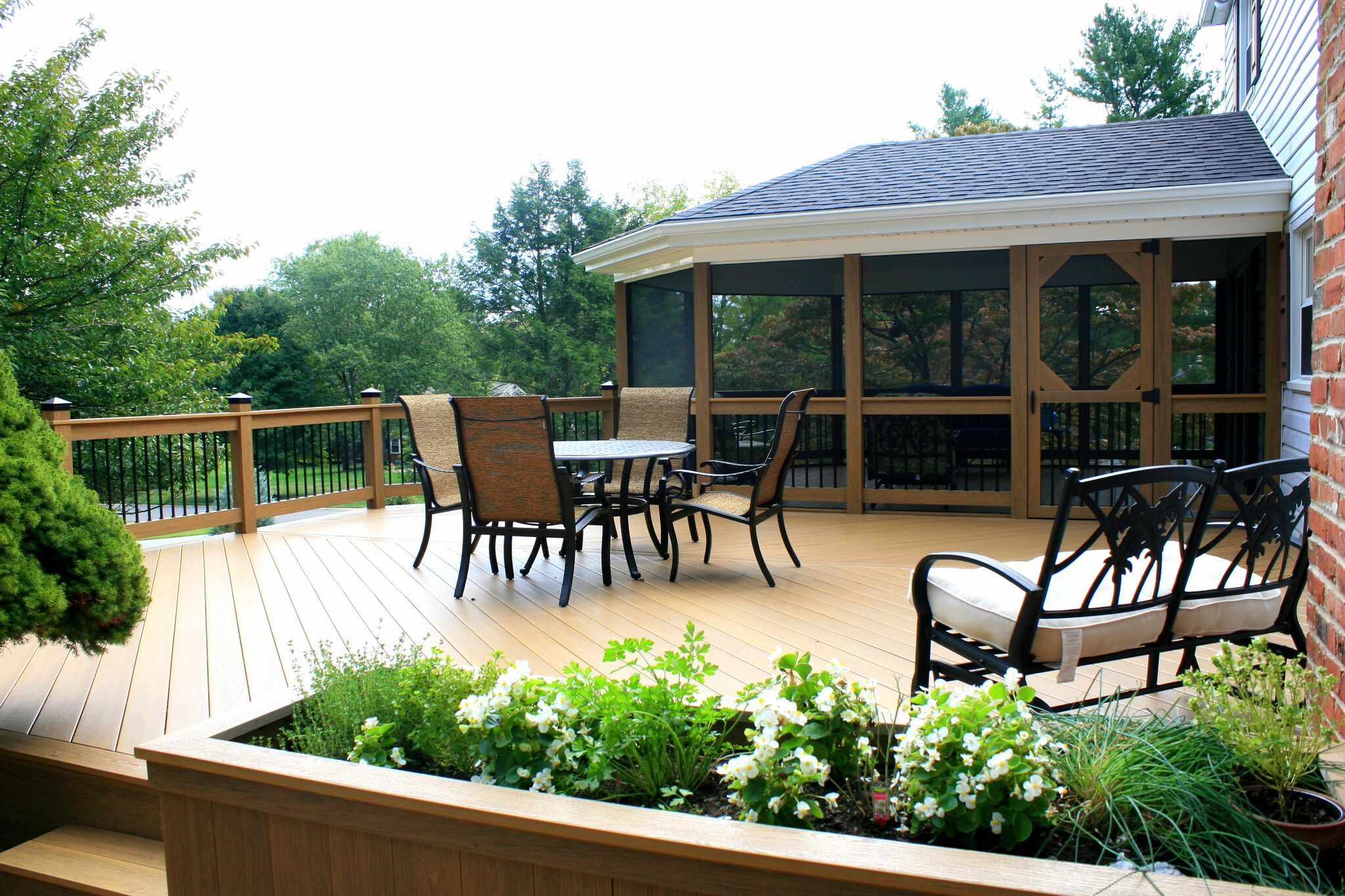

Garden Design
How Much Does A Backyard Deck Cost
Published: August 5, 2023
Discover the average cost of a backyard deck and enhance your landscape design. Get expert tips and estimates for your project.
(Many of the links in this article redirect to a specific reviewed product. Your purchase of these products through affiliate links helps to generate commission for Chicagolandgardening.com, at no extra cost. Learn more)
Table of Contents
- Introduction
- Factors that affect the cost of a backyard deck
- Material options and their costs
- Size and layout considerations
- Additional features and their cost implications
- Labor and installation costs
- Building permits and inspections
- Maintenance and repair costs
- Budgeting tips for building a backyard deck
- Conclusion
Introduction
Welcome to the world of landscape design! If you’re looking to transform your backyard into an inviting and functional space, one of the best additions you can consider is a deck. A backyard deck not only adds value to your property but also offers a versatile outdoor area where you can relax, entertain guests, and enjoy the beauty of your surroundings.
But before you dive into the world of deck construction, it’s important to have a clear understanding of the costs involved. Budgeting for a backyard deck requires careful consideration of several factors, including materials, size, layout, additional features, labor, permits, and maintenance. By understanding these factors, you can make informed decisions and ensure that your dream deck aligns with your budget.
In this article, we will delve into the various elements that contribute to the cost of a backyard deck. We’ll explore the different material options available and their associated costs. We’ll also discuss the influence of the deck’s size and layout on the overall budget. Additionally, we’ll touch on the impact of additional features, such as railings, steps, and built-in seating, on the total cost of the project.
Furthermore, we’ll shed light on the labor and installation costs involved in building a deck. We’ll discuss the importance of obtaining building permits and undergoing inspections to ensure compliance with local building codes. Additionally, we’ll provide insights into the ongoing maintenance and repair expenses associated with deck ownership.
If you’re concerned about sticking to a budget, don’t worry! We’ve got you covered with some budgeting tips that will help you plan and allocate your resources effectively. By implementing these strategies, you can ensure that your backyard deck project stays within your financial means while still achieving the results you desire.
So, whether you’re envisioning a small and cozy deck or a sprawling outdoor oasis, this article will serve as your comprehensive guide to understanding the costs associated with building a backyard deck. Let’s dive in and explore the fascinating world of deck design and construction!
Factors that affect the cost of a backyard deck
When it comes to determining the cost of a backyard deck, several factors come into play. Understanding these factors will help you make informed decisions and effectively manage your budget. Let’s explore the key factors that influence the cost of a backyard deck:
- Material Choice: The choice of materials has a significant impact on the overall cost of your deck. Wood, composite, and PVC are popular options, each with its own advantages and price points. While wood may be more affordable initially, it requires regular maintenance, which can add to the long-term costs. Composite and PVC materials, on the other hand, have higher upfront costs but offer durability and require less maintenance.
- Size and Layout: The size and layout of your deck directly affect the cost. Larger decks require more materials and labor, thus increasing the overall expense. Additionally, complex design elements, such as multiple levels or intricate shapes, can also raise the cost due to the additional time and expertise required for their construction.
- Additional Features: Incorporating additional features into your deck design, such as railings, stairs, built-in seating, and lighting, can contribute to the overall cost. These features not only enhance the functionality and aesthetic appeal of your deck but also require additional materials and labor for their installation.
- Labor and Installation: The cost of labor and installation can vary depending on the complexity of the project, the expertise of the contractor, and the region in which you reside. It’s essential to obtain multiple quotes from reputable contractors to ensure you’re getting a fair price. Keep in mind that labor costs can significantly impact your overall budget, so it’s important to allocate funds accordingly.
- Building Permits and Inspections: Many municipalities require building permits and inspections for deck construction. The cost of obtaining permits and undergoing inspections should be factored into your budget. Failure to comply with local building codes can result in costly fines and project delays, so it’s crucial to follow the necessary regulations.
- Maintenance and Repairs: While not an upfront cost, it’s important to consider the long-term maintenance and repair expenses associated with owning a deck. Wood decks may require regular sealing, staining, and replacement of worn-out boards, which can add to the overall cost over time. Composite and PVC decks generally require less maintenance, but periodic cleaning and repairs may still be necessary.
By understanding these factors, you can make informed decisions that align with your budget and design goals. Keep in mind that each factor can vary in cost depending on your specific requirements and location. By carefully evaluating these factors and working with a reputable contractor, you can create a beautiful and functional backyard deck that meets your needs without breaking the bank.
Material options and their costs
Choosing the right material for your backyard deck is crucial, as it not only affects the aesthetics and durability of your deck but also significantly impacts the overall cost. Let’s explore some common material options and their costs:
- Wood: Wood is a classic and popular choice for decking due to its natural beauty and affordability. Pressure-treated lumber is the most cost-effective option, with prices ranging from $1.50 to $3.50 per square foot. However, keep in mind that wood decks require regular maintenance, including sealing, staining, and potentially replacing boards, which can add to the long-term costs.
- Composite: Composite decking is a modern alternative to wood that offers durability, low maintenance, and a wide range of design options. While composite materials have a higher upfront cost, ranging from $4 to $10 per square foot, they are resistant to rot, insects, and fading. Additionally, the long lifespan of composite decking can offset the higher initial investment.
- PVC: PVC (polyvinyl chloride) decking is another low-maintenance option that offers exceptional durability and resistance to moisture and stains. PVC decking typically costs between $8 and $12 per square foot. While it may have a higher upfront cost, its longevity and resistance to wear make it a cost-effective choice in the long run.
- Hardwood: For those seeking a luxurious and exotic look, hardwood decking provides a high-end option. Hardwood decking materials, such as Ipe or Tigerwood, can range from $8 to $12 per square foot. Keep in mind that hardwood decks require regular maintenance to preserve their color and prevent weathering.
- Plastic: Plastic decking, often made from recycled materials, offers an eco-friendly and low-maintenance alternative. Plastic deck materials can cost between $7 and $13 per square foot, depending on the specific brand and quality. Plastic decks are resistant to mold, mildew, and fading, making them a durable and long-lasting option.
It’s important to consider not only the upfront cost but also the long-term maintenance requirements and lifespan of the materials when choosing the best option for your budget. Consulting with a professional can help you determine which material is most suitable for your needs, desired aesthetics, and financial constraints.
Remember that while the material cost is a major consideration, other factors such as installation, additional features, and ongoing maintenance should also be factored into your overall deck budget. By evaluating your options and prioritizing your needs, you can make an informed decision and create a backyard deck that combines cost-effectiveness and beauty.
Size and layout considerations
The size and layout of your backyard deck play a significant role in determining both the overall cost and the functionality of the space. Before embarking on your deck-building project, it’s important to carefully consider the following factors:
1. Available Space: The size of your backyard will naturally dictate the size of your deck. Assess the available space and consider how much of it you want to allocate to the deck. Keep in mind that larger decks generally require more materials, labor, and maintenance, which can impact the overall cost.
2. Intended Use: Think about how you plan to use the deck. Will it primarily serve as a space for entertaining guests, hosting outdoor meals, or simply relaxing? Understanding your desired functionality will help determine the layout and features required, such as seating areas, outdoor kitchens, or fire pits.
3. Traffic Flow: Consider the flow of movement on your deck. Ensure that there is enough space for people to move comfortably between areas, such as from the seating area to the grill or from the deck to the yard. Avoid designs that restrict or create congestion in traffic flow, as it can compromise the usability of the space.
4. Levels and Platforms: If you envision a multi-level or tiered deck, it’s important to note that additional materials and labor will be required. Multiple levels can create separate zones for different activities and add visual interest to your deck, but they also increase the overall cost.
5. Shape and Design Complexity: The shape and design complexity of your deck also impact the cost. Complex shapes, curves, and intricate patterns often require additional time, skill, and labor, all of which can increase the total expense. Consider your personal design preferences and budget constraints when deciding on the shape and design of your deck.
6. Views and Privacy: Take advantage of the views from your backyard and design your deck accordingly. Consider if you prefer an open, expansive deck or if you want to incorporate features like privacy screens or trellises. These additions can enhance the functionality and aesthetics of your deck but may come at an additional cost.
By carefully thinking through the size and layout of your backyard deck, you can create a space that meets your needs while managing your budget effectively. Collaborating with a professional landscape designer or contractor can help you optimize the design and functionality of your deck and ensure that it fits seamlessly into your outdoor living space.
Additional features and their cost implications
When planning your backyard deck, you’ll likely consider incorporating additional features to enhance its functionality, aesthetics, and overall enjoyment. While these features can greatly enhance your outdoor living space, it’s important to be aware of the cost implications. Here are some common additional features and their associated costs:
- Railings: Railings are an important safety feature for elevated decks. The cost of railings can vary depending on the material, style, and complexity of the design. Typically, the cost ranges from $25 to $120 per linear foot. Materials such as wood, metal, or composite can be used, each with its own price point.
- Stairs: If your deck has multiple levels or requires access to the yard, stairs are essential. The cost of stairs depends on the number of steps and the complexity of the design. On average, expect to spend around $150 to $250 per step, including materials and labor.
- Built-in Seating: Built-in seating, such as benches or integrated deck furniture, can provide convenience and save space. The cost of built-in seating will depend on the materials, design complexity, and labor involved. Budget around $500 to $2,000, or more, for this feature.
- Outdoor Kitchen: An outdoor kitchen can transform your deck into a complete entertainment area. Costs for outdoor kitchens vary greatly depending on the appliance selection, countertop materials, and plumbing or electrical work required. Prices typically range from $5,000 to $20,000 or more, depending on the scale and customization of the kitchen.
- Fire Pit or Fireplace: A fire pit or fireplace adds warmth, ambiance, and a gathering spot to your deck. Costs can range from a simple portable fire pit costing around $100 to a custom-built fireplace with a price tag in the thousands. The materials, size, and complexity of the feature will impact the cost.
- Lighting: Lighting is an important consideration for both safety and ambiance. The cost of deck lighting will depend on the number of fixtures, their type (such as solar or electric), and the complexity of the installation. Plan to budget around $100 to $500 or more for lighting, depending on the size and design of your deck.
Remember that these costs are estimates and can vary depending on factors such as the region, material quality, and the complexity of the design. It’s essential to work closely with your contractor or designer to determine the exact cost of incorporating additional features into your deck project.
While adding these features can enhance your deck, it’s important to strike a balance between your desired enhancements and your budget. Prioritize the features that align with your needs, and consider incorporating others at a later time if they exceed your current budget.
By carefully considering these additional features and their cost implications, you can create a deck that is not only functional but visually appealing and customized to your tastes and preferences.
Labor and installation costs
When it comes to building a backyard deck, labor and installation costs can be a significant portion of your overall budget. Hiring skilled professionals ensures that your deck is constructed safely, efficiently, and according to local building codes. Here’s what to consider when it comes to labor and installation costs:
1. Hiring a Contractor: Hiring a professional contractor is essential for a successful deck installation. The cost of hiring a contractor can vary depending on factors such as their experience, reputation, location, and the complexity of your deck project. It’s advisable to obtain multiple quotes and thoroughly research potential contractors before making your decision.
2. Material Delivery and Removal: If the contractor is responsible for obtaining the materials and delivering them to your site, there may be additional fees associated with material delivery. Similarly, the removal and disposal of any demolition materials might incur additional costs. Be sure to clarify with your contractor if these services are included in their quote.
3. Site Preparation: Before the actual deck construction begins, there may be some site preparation required. This could involve clearing the area of vegetation, leveling the ground, or excavating if necessary. Site preparation costs, if applicable, should be discussed with your contractor beforehand.
4. Deck Construction: The labor and installation costs for deck construction involve various tasks such as laying the foundation, framing, installing the decking boards, and adding any additional features. The costs will depend on the size and complexity of the deck, as well as the expertise and efficiency of the labor involved.
5. Timeline and Scheduling: The timeline for labor and installation can vary depending on factors such as the workload of the contractor and the weather conditions. It’s essential to discuss the estimated timeline with your contractor beforehand and ensure that it aligns with your expectations and project deadlines.
6. Payments and Contracts: Before starting the project, it’s crucial to discuss payment terms and have a written contract in place. This will protect both you and the contractor from any disputes or issues that may arise during the project. Make sure to clarify payment milestones and methods to avoid any confusion.
The labor and installation costs will depend on the specific requirements of your deck project. It’s advisable to allocate a portion of your budget specifically for labor to ensure that you can hire experienced professionals who will deliver high-quality workmanship.
Remember, it’s important to prioritize quality over cost when it comes to labor and installation. Cutting corners on labor expenses can lead to subpar workmanship and potential safety issues down the line. Investing in skilled professionals will ultimately ensure a durable and well-constructed deck that you can enjoy for years to come.
Building permits and inspections
When planning to build a backyard deck, it’s crucial to understand the importance of obtaining the necessary building permits and undergoing inspections. Compliance with local building codes ensures the safety, structural integrity, and legal adherence of your deck construction. Here’s what you need to know about building permits and inspections:
1. Building Permits: Most municipalities require building permits for deck construction. The permit process ensures that your deck meets safety standards and is in compliance with local regulations. Permit costs vary based on location and deck size but typically range from $100 to $500. It’s essential to contact your local building department to determine the specific requirements and fees applicable to your area.
2. Permit Application Process: Applying for a building permit involves submitting detailed plans and specifications for your deck, including the size, height, materials used, and structural components. You may also need to provide information on electrical and plumbing elements if applicable. It’s important to provide accurate and thorough information to prevent delays or rejections in the permit approval process.
3. Inspections: Once the permit is obtained, your deck construction will be subject to inspections at various stages of the building process. Inspections typically occur after the footings are poured, the framing is completed, and the deck is completed. The purpose of these inspections is to ensure that the construction meets the approved plans, proper techniques are employed, and safety protocols are followed.
4. Contractor Responsibilities: If you hire a contractor, they are usually responsible for obtaining the necessary permits on your behalf. Ensure that the contractor is licensed and insured, and verify that they have a good track record of working within the local building regulations. It’s important to communicate with the contractor about the permit process and ensure that they are compliant with all requirements.
5. Consequences of Non-Compliance: Failure to obtain the required permits or undergo inspections can result in costly fines, legal issues, and potential safety hazards. Non-compliant decks may need to be modified or even demolished, leading to increased expenses and project delays. It’s essential to prioritize compliance and ensure that all necessary permits and inspections are secured before commencing construction.
6. Documentation and Record-Keeping: Keep all documentation related to permits, inspections, and approvals in a safe and accessible place. This includes permit applications, approved plans, inspection reports, and any correspondence with the building department. These documents may be needed for future reference or if you decide to sell your property.
By adhering to the building permit process and complying with inspections, you can ensure that your deck is constructed safely and legally. It’s always recommended to consult with professionals, such as architects, engineers, or experienced contractors, to ensure that your deck design and construction meet all necessary requirements and standards.
Maintenance and repair costs
Once your backyard deck is completed, it’s important to understand that ongoing maintenance and occasional repairs are crucial for its longevity and continued enjoyment. Regular maintenance helps preserve the appearance and structural integrity of your deck, while timely repairs prevent small issues from turning into major problems. Here’s what you need to know about maintenance and repair costs for your deck:
1. Cleaning and Sealing: Regularly cleaning your deck is essential to prevent the buildup of dirt, debris, and mold. Depending on the materials used for your deck, cleaning may involve simple methods such as sweeping, power washing, or using mild cleaning solutions. Sealing the deck with an appropriate sealant or stain also helps protect it from weathering and extends its lifespan. The frequency and cost of cleaning and sealing will depend on the materials used and the level of exposure to the elements.
2. Board Replacement: Over time, individual deck boards may become damaged, warped, or rotted due to exposure to the elements or wear and tear. Promptly replacing these boards is crucial to maintaining the structural integrity and safety of your deck. The cost of board replacement will depend on the type of decking material used and the size and complexity of the affected area. It’s recommended to keep extra boards on hand to match the existing decking for consistent appearance.
3. Inspection and Maintenance: Regularly inspecting your deck for signs of wear, such as loose or corroded fasteners, deteriorating wood, or unstable railings, is important. Addressing these issues promptly can prevent further damage and potentially expensive repairs. Performing general maintenance tasks, such as tightening screws, resealing gaps, and lubricating hinges and hardware, can help extend the life of your deck and minimize future repair costs.
4. Refinishing or Restoring: If your deck’s appearance begins to fade or you want to give it a fresh look, refinishing or restoring the deck is an option. This can involve sanding, recoating, or painting the deck, depending on the material and desired finish. The cost and frequency of refinishing or restoring will depend on factors such as deck size, material, and personal preference.
5. Professional Maintenance and Repair: Depending on your time, skills, and comfort level with DIY projects, you may choose to hire professionals for routine maintenance or large-scale repairs. Professional services can ensure proper handling of specialized tasks, offer expert guidance, and save you time and effort. The cost of professional maintenance and repair will vary depending on the scope and complexity of the work required.
6. Preventative Measures: Taking preventative measures can help minimize maintenance and repair costs. Regularly clearing debris, using furniture protectors, and placing mats or rugs in high-traffic areas can help prevent scratches, stains, and other damage to your deck. Additionally, addressing issues promptly, such as addressing loose handrails or fixing small cracks, can prevent more significant and costly repairs in the future.
It’s important to budget for ongoing maintenance and occasional repairs to ensure the long-term durability and enjoyment of your deck. Regular upkeep not only keeps your deck looking beautiful but also helps maintain its structural integrity. By taking proactive steps and addressing maintenance and repair needs promptly, you can extend the lifespan of your deck and minimize the long-term costs associated with neglect or delayed repairs.
Budgeting tips for building a backyard deck
Building a backyard deck is an investment that requires careful budgeting to ensure a successful and cost-effective project. By following these budgeting tips, you can ensure that you make informed decisions, manage your finances effectively, and create a beautiful deck that fits your budget:
1. Determine your budget: Start by setting a realistic budget for your deck project. Consider factors such as material costs, labor expenses, permits, and additional features. Make sure to include a contingency fund for unexpected expenses or changes in design plans.
2. Research materials and their costs: Gather information and compare the costs of different decking materials. Consider not only the upfront costs but also the long-term maintenance requirements and durability of each material. This will help you choose a material that fits your budget and lifestyle.
3. Plan the size and layout: Carefully consider the size and layout of your deck to ensure it meets your needs without unnecessary expenses. Avoid overbuilding or unnecessarily large deck sizes, as they can inflate the overall cost. Optimize the layout for your intended use and ensure efficient use of materials and labor.
4. Prioritize essential features: Identify the essential features that you want for your deck and prioritize them in your budget. This may include safety features, functional aspects, or design elements you can’t live without. Allocate funds accordingly to ensure you include these must-haves in your project.
5. Get multiple quotes: Obtain quotes from different contractors or suppliers to compare costs and ensure you’re getting a fair price. Remember, the lowest quote may not always be the best option. Consider the reputation, experience, and quality of workmanship offered by each contractor.
6. Optimize labor and installation costs: Work closely with your contractor to optimize labor and installation costs. This could involve scheduling the project during the contractor’s slower season, allowing for more competitive pricing. Additionally, consider taking on some of the less-skilled tasks yourself to reduce labor expenses.
7. Consider phased construction: If your budget is tight, consider phasing your deck construction. Start with the essential components and add on additional features or expansions in the future as your budget allows. This approach allows you to enjoy your deck while giving you flexibility in managing your costs.
8. DIY vs. hiring professionals: Assess your skills, experience, and availability before deciding whether to take on certain tasks yourself or hire professionals. While a DIY approach can save money on labor, ensure you have the necessary knowledge and tools to complete the work safely and effectively.
9. Account for permits and inspections: Allocate funds for building permits and inspections in your budget. Factor in the associated fees, as well as any potential modifications or corrections that may arise during inspections.
10. Plan for maintenance costs: Remember to include ongoing maintenance costs in your budget. Regular cleaning, sealing, and occasional repairs are necessary to keep your deck in top condition. Set aside funds for these routine maintenance tasks to prolong the life of your deck.
By employing these budgeting tips, you can ensure that your deck project stays within your financial means without compromising on quality or functionality. With proper planning and decision-making, you’ll be able to enjoy a beautiful and functional backyard deck that enriches your outdoor living space for years to come.
Conclusion
Building a backyard deck is an exciting endeavor that can greatly enhance your outdoor living space. However, it’s important to approach the project with a thorough understanding of the costs involved and a well-planned budget. By considering various factors, such as material options, size and layout considerations, additional features, labor and installation costs, building permits and inspections, and maintenance and repair costs, you can make informed decisions and effectively manage your budget.
Researching different material options and understanding their costs allows you to choose one that aligns with your budget and desired aesthetic. Carefully considering the size and layout of your deck ensures that you optimize space utilization while avoiding unnecessary expenses. Planning for additional features helps you prioritize and allocate funds for desired enhancements. Understand the labor and installation costs involved and hire professionals to ensure a safe and efficient construction process.
Don’t forget to obtain the necessary building permits and undergo inspections to remain in compliance with local regulations. Factor in maintenance and repair costs to keep your deck in excellent condition and maximize its lifespan. Lastly, implement budgeting tips, such as determining your budget, getting multiple quotes, considering phased construction, and accounting for ongoing maintenance costs, to ensure that your project stays within your financial means.
By incorporating these considerations and tips, you can successfully build a beautiful and functional backyard deck that enhances your outdoor living experience. Remember to consult with professionals, such as contractors or designers, for expert advice and guidance throughout the process. With proper planning and budgeting, you’ll be well-equipped to enjoy your dream deck for years to come.

